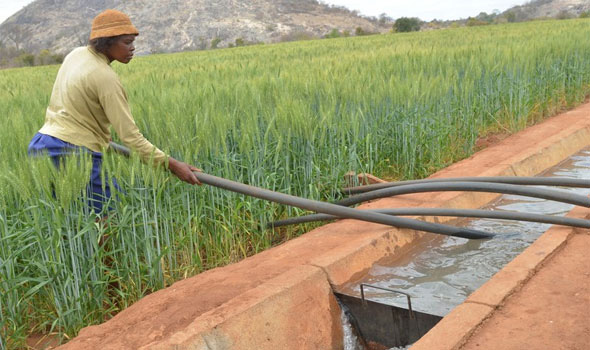Mining sector prospects remain on upside
CHAMBER of Mines of Zimbabwe chief executive officer, Dr Isaac Kwesu says mining sector prospects remain on the upside, benefitting from favourable mineral prices and several expansion projects.
In the first half of the year, several minerals registered increases in production, a firm indication that the US$12 billion mining industry by 2023 is attainable, he said.
Speaking at the mining industry suppliers’ forum organised by the Chamber of Mines of Zimbabwe last week, Dr Kwesu said the industry prospects are bright.
The supplier’s forum was a precursor to the just-ended 25th Edition of Mine Entra Conference, which brought together local and foreign players in the mining industry and Government officials.
President Mnangagwa officially opened the Mine Entra Conference and commended the sector for its sterling performance.
President Mnangagwa
“This year’s forum comes at a time when the mining industry is on a strong recovery path, having grown by 3,4 percent in 2021, and is projected to further grow by more than eight percent in 2022,” said Dr Kwesu.
“The sector contributed US$5,2 billion in export earnings in 2021 and is expected to generate in excess of US$6 billion in 2022.
“In the first half of this year, we have witnessed increases in production for all key minerals with gold output reaching around 17 tons, a 60 percent increase compared to the same period in 2021.
“Platinum Group Metals also increased production of between two percent and five percent (rhodium two percent, platinum four percent, palladium four percent, ruthenium five percent).”
In the first quarter, lithium production was up 83 percent, diamond up 51 percent, coal up 21 percent and nickel up 13 percent, said Dr Kwesu.
However, he noted that key headwinds facing the industry and the weakening global economy may negatively impact the price of commodities and the unfavorable foreign exchange shortfalls may hinder the sector’s expansion plans.
“The mining industry continues to operate below capacity on the backdrop of structural bottlenecks that include foreign exchange shortfalls, electricity supply disruptions, capital shortages and a high-cost structure,” said Dr Kwesu.
Mr Onesimo Moyo
In a speech read on his behalf, Permanent Secretary for Mines and Mining Development, Mr Onesimo Moyo, said despite operating in an environment with constrained fiscal space, there is a need for the sector to come up with innovative financing mechanisms.
He said suppliers were further constrained in terms of access to foreign currency and limited availability of funding from the local financial sector.
“This is additionally compounded by the low uptake of locally produced manufactured products by mining companies and the industry.
This is mainly a result of low-quality standards cited by end users of such products,” he said.
“The effects of the European disturbances between Russia and Ukraine has exposed the state of unpreparedness by our country to achieve self-sustainability in terms of supply of critical inputs to the mining industry.
“Our local manufacturing industry is falling short of adequately supply critical components for the productive sectors.
Suppliers and mining companies are, therefore, urged to come up with smart synergies, where businesses invest not only in downstream industries but upstream industries as well.”
The mining industry is one of Zimbabwe’s economic mainstays with the sector presently contributing about 70 percent of the country’s foreign currency earnings.-chronicle.co.zw









